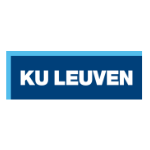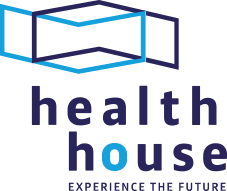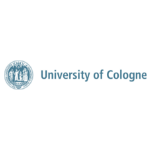Selective Deep Brain Stimulation: Time and space for a change?
DBS SELECT seeks to validate novel technologies designed to improve Deep Brain Stimulation (DBS) neuromodulation therapy, which uses electrical impulses to help patients with movement disorders. By showing the effectiveness of technologies to better control the time and location of brain stimulation, and by educating patients, the project can increase market penetration of this well-developed innovation.
DBS can help movement disorder patients who do not respond to other treatments, but DBS is not selective – it stimulates a broad population of neurons, causing side effects and sub-optimal therapy. This project is a unique collaboration between two DBS centres and a DBS manufacturer who agreed that DBS could be improved with selective stimulation and that this improvement, along with better patient education, could increase uptake. The partners recognised that these goals were best achieved as as a team, with the support of EIT Health.
Team
- KU Leuven: Prof Myles Mc Laughlin, project leader, neuromodulation experience; Prof Bart Nuttin, DBS neurosurgeon.
- UK Köln: Prof Veerle Visser-Vandewalle, Head of Stereotactic and Functional Neurosurgery.
- Uni. of Köln: Dr. Pauline Schumacher, project manager.
- Boston Scientific: Nic Van Dyck, Global Head of Clinical Operations.
- Health House: Isabelle François, Managing Director.
- Bedalov d.o.o.: Ana Bedalov, CEO.
The project
The project seeks to leverage innovative neuromodulation technology to improve the management of movement disorders by: 1) valorising a new selective DBS stimulation strategy that builds on existing, but underexploited, neuromodulation hardware; and 2) creating a new education platform targeted at potential DBS patients and their caregivers. A clear and swift route to market is ensured because the hardware to deliver the new selective DBS already exists and already has regulatory approval for patient use. Improved education will lead to market growth.
Work will include:
- Developing the tools and support to do the clinical studies, including creating an artefact-free neural recording device, which will be a new product for the research market.
- Evaluating the effect of complex pulse shapes in ten movement disorder patients and comparing them to standard pulse shapes, to better understand the neural mechanisms behind selective DBS.
- Evaluating the effect of directional stimulation in ten movement disorder patients in a clinical setting and comparing them to standard DBS, and optimising a visualisation software program in order to find the optimal stimulation settings, based on imaging.
- Designing an interactive education platform targeted at potential DBS patients, their families and healthcare professionals.
- Valorising the best selective DBS strategies in five patients, as a first step towards rolling out selective DBS to all patients.
Impact
By improving DBS therapy, and increasing its uptake, DBS SELECT promises to offer better treatment for a greater number of people with movement disorders, with a resulting positive impact on patients and their families. Healthcare systems can benefit from a better form of treatment and society can benefit from the increased productivity realised by treating people with movement disorders.
Why this is an EIT Health project
Along with promising improved healthcare, DBS SELECT is in keeping with the EIT Health Focus Area of “Care Pathways” because it offers better treatment for people with movement disorders, promising to help patients who do not respond to other therapies.
External partners
- Bedalov d.o.o.
- Boston Scientific

Partners

CLC/InnoStars: Belgium-Netherlands
Partner classification: Education, Research
Partner type: Associate Partner
KU Leuven (together with University Hospitals Leuven) is a research-intensive, internationally oriented university that carries out excellence-driven research in health and care and is dedicated to build bridges between science, society and industry.






CLC/InnoStars: Belgium-Netherlands
Partner classification: Tech Transfer, Clusters, Other NGOs
Partner type: Linked/Affiliated Party
Health House opens up new horizons in health technology by uniting health, high-tech and all the people around it. Providing hands-on interaction with cutting-edge technology and inspiration for research, business, and cooperations. Health House will turn every visit into a unique experience.
Health House vzw
Health House vzw, Gaston Geenslaan 11, 3001 Leuven, Belgium






CLC/InnoStars: Germany
Partner classification: Education, Research, Hospital / University Hospital
Partner type: Associate Partner
UoC is one of the leading German research universities with strong international reach. Awarded the status of "Excellence University" in 2012, it currently has > 50,000 students enrolled in six faculties offering many disciplines.
University of Cologne (UoC)
University of Cologne (UoC), Albertus-Magnus-Platz, 50931 Köln, Germany
Key Activities in Research and Developement
Biomedical engineering, Life Sciences, Social sciences / health economics, Clinical research
Key Activities in Business Creation
Incubation, Technology Transfer
Key Activities in Education
Entrepreneurship training, Technical faculties, Medical faculties



| Head of Stereotactic and Functional Neurosurgery | Universitäsklinikum Köln
Contact